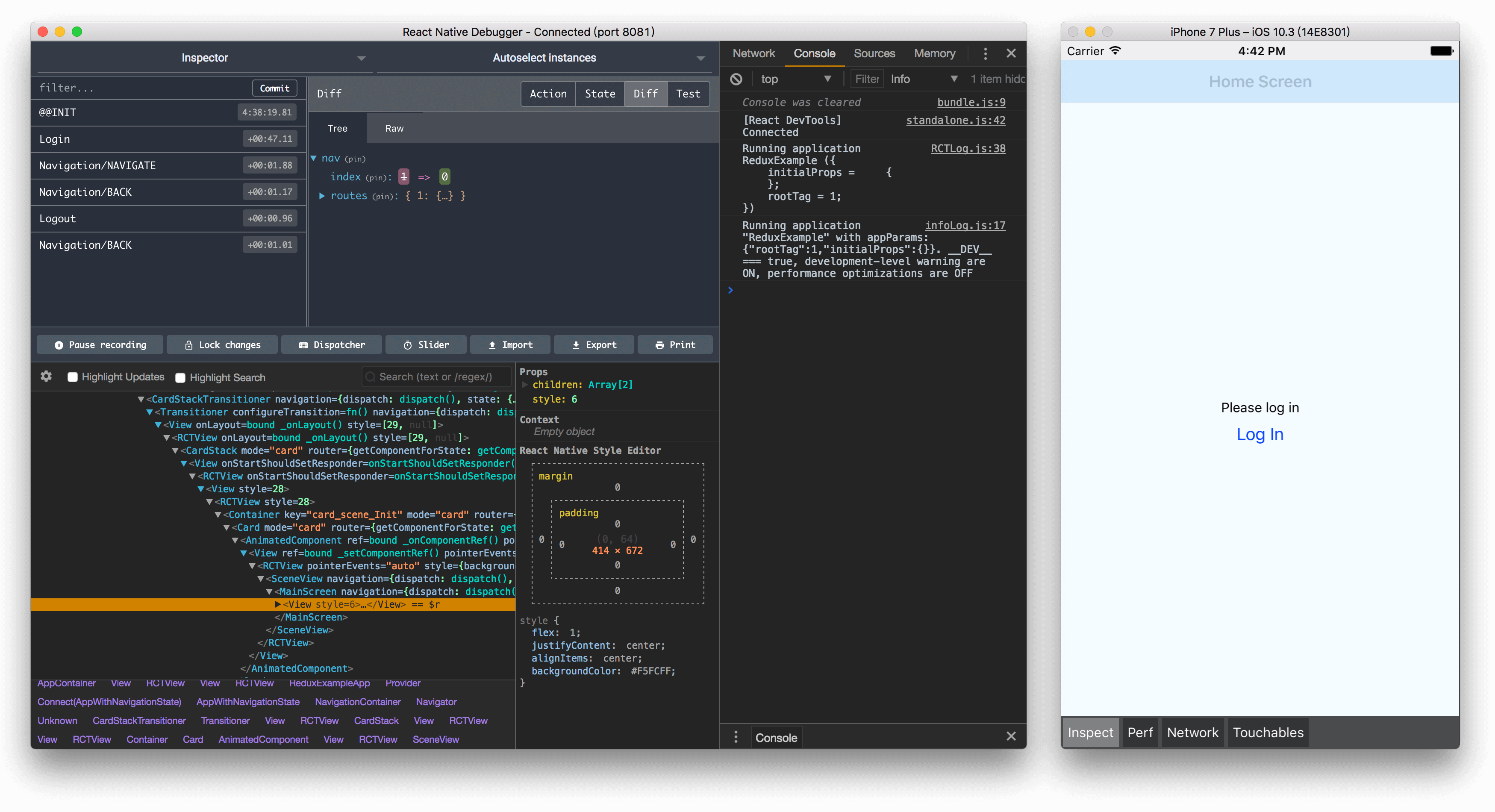In react js app it is very easy to call the node js app rest APIs. In this tutorial, you will learn how to call API of node js express app from react js app and also how to send data in the node js app from react app and store it on MySQL database. React is a declarative, efficient, and flexible JavaScript library for building user interfaces. The CData API Server enables you to generate REST APIs for 80+ data sources, including both on-premises and cloud-based databases. The React app dynamically builds and populates an HTML table based on the database data.
While the article steps through most of the code, you can download thesample React project and SQLite database to see the full source code and test the functionality for yourself. This tutorial will create a simple form in react js app and send the data of this form to node js express app. When you look at a suitable database for your react native application, you need to know about your requirements in the first place. Realm as local database works well in every possible requirement where SQLite and Core Data fail to the same level of performance, security, and scalability. Firebase is well suited in situations where you want to develop real-time applications.
But, if It's a million dollar idea, then you should better choose Realm or SQLite. SQLite is suitable in such cases where you don't need to access "real" database but still, you want the capabilities and power of a relational database. Below, you will see a list of tables and the URLs to access them. For more information on accessing the tables, you can open the API page from the navigation bar.
To work with React, you can append the @json parameter to the end of URLs that do not return JSON data by default. This react native database is famous for maintaining high-levels of security as it uses different encryption methods for separate platforms. Moreover, with Realm databases, the developers can easily open & edit local and synced systems. In addition, it allows them to administrate Realm object server instances. The developers find it very easy to perform other important tasks like viewing logs, browsing data, etc. through the Realm database. Debugging React applications can be difficult, especially when users experience issues that are hard to reproduce.
If you're interested in monitoring and tracking Redux state, automatically surfacing JavaScript errors, and tracking slow network requests and component load time, try LogRocket. LogRocket is like a DVR for web and mobile apps, recording literally everything that happens on your React app. Instead of guessing why problems happen, you can aggregate and report on what state your application was in when an issue occurred. LogRocket also monitors your app's performance, reporting with metrics like client CPU load, client memory usage, and more. First of all, we can not connect React JS to MongoDB because things don't work like this. For connecting React to the database we integrate through API.
Now see how we create a simple React app that takes the input name and email from users and saved it to the database. In this step, you'll create a login page for your application. You'll start by installing React Router and creating components to represent a full application. Then you'll render the login page on any route so that your users can login to the application without being redirected to a new page.
1React is one of the main libraries from Facebook used to build this app.2ReactDOM is the package that serves as the entry point to the DOM and server renderers for React. It is intended to be paired with the generic React package.3client is custom code that configures rest.js to include support for HAL, URI Templates, and other things. It also sets the default Accept request header to application/hal+json. In this tutorial, you will create a simple full-stack web application using AWS Amplify, a set of tools and services including a web hosting service.
In the first module, you'll build and host a React application on AWS. Through the remaining 4 modules, you will initialize a local app using the CLI, add authentication, add a GraphQL API and database, and update your app to store images. In this tutorial, you'll create a React application using a token-based authentication system.
You'll create a mock API that will return a user token, build a login page that will fetch the token, and check for authentication without rerouting a user. If a user is not authenticated, you'll provide an opportunity for them to log in and then allow them to continue without navigating to a dedicated login page. As you build the application, you'll explore different methods for storing tokens and will learn the security and experience trade-offs for each approach. This tutorial will focus on storing tokens in localStorage and sessionStorage.
You may ask yourself where to place all this socket.io code within a React component. First, I initialized the socket in the App component that is the parent component of PageRank and CommunityDetection components. After that, I placed the socket events in componentDidMount() lifecycle method of the child components. This part of the React.Component lifecyle is invoked once, immediately after a component is mounted.
If you need to load data from a remote endpoint, this is a good place to instantiate the network request. This method is also a good place to set up any subscriptions. That's why I have decided to place all socket events there. Before I set up the socket, at the beginning of the componentDidMount(), I made a simple HTTP request that will trigger the backend to start producing the needed data. In the above example, we have imported mssql module and called connect() method to connect with our SchoolDB database. We have passed config object which includes database information such as userName, password, database server and database name.
On successful connection with the database, use sql.request object to execute query to any database table and fetch the records. I want to get the data from front end react js form and insert in to mysql database using backend express. Can you tell me the flow from front end to backend with simple one field form using react js and then insert into database.
SQLite was designed to provide local storage to mobile apps. It is a relational database management system designed to meet the storage demands of mobile applications. The word "lite" in SQLite describes it as being a lightweight library based database which requires minimal setup.
SQLite can be integrated with the mobile application to directly access the database. Moreover, you will not need any application server to access data as firebase real-time database can be directly accessed from a mobile device. It's main function is to store all data on devices which lets the developers to move away from the client-server architecture.
Because SQLite follows all the SQL-based standards, it is Atomicity, Consistency, Isolation, Durability complaint. The database has a plugin named react-native-sqlite-storage that acts as a native plugin for both iOS and Android platforms. In the tech realm, React Native is considered to be the best framework for cross-platform app development. Be it Android/iOS, demand for React Native is increasing as many organizations are trusting the working of this ecosystem. But companies across the globe find it tough to choose react native databases as it has a plethora of options available. We first use the MySQLi PHP extension to create a connection to our MySQL database using the mysqli_connect() method.
Next, we use the $_SERVER['REQUEST_METHOD'] to retrieve the request method sent from the Axios client. If the request is POST we create a SQL INSERT query with the post data retrieved from the $_POST object. In this step you created a local API and a login page for your application. You learned how to create a Node server to send a token and how to call the server and store the token from a login component. In the next step, you'll learn how to store the user token so that a session will persist across page refreshes or tabs.
In this step, you'll create a local API to fetch a user token. You'll build a mock API using Node.js that will return a user token. You'll then call that API from your login page and render the component after you successfully retrieve the token.
By the end of this step, you'll have an application with a working login page and protected pages that will only be accessible after login. In this step, you created an application with private components and a login component that will display until you set a token. You also configured routes to display the pages and added a check to display the Login component on every route if the user is not yet logged into the application. React registration/signup form validation example; In this tutorial, you have learned how to add validation rules on registration/signup forms field in react js apps.
Another great option to store your mobile application's data is React Native SQLite. It goes as lite because it is compact, easy to install and administer. The SQLite local database was created specifically to store information from mobile applications. However, it is successfully used with desktops and other devices too. This feature allows developers to build applications with the ability to save the data on the device without an Internet connection.
Further, the app will send all the information to the server as soon as it reestablishes the connection. Additionally, Firebase makes timestamps for saving users' progress by the minute when the app gets disconnected. Install mssql driver using npm command, npm install mssql in the command prompt. This will add mssql module folder in node_modules folder in your Node.js application. This tutorial uses mssql v2.3.1, which is latest version as of now. The top tier of the MERN stack is React.js, the declarative JavaScript framework for creating dynamic client-side applications in HTML.
React lets you build up complex interfaces through simple Components, connect them to data on your backend server, and render them as HTML. Prisma is an open-source ORM that's typically used in backend applications (e.g. API servers) to send queries to a database and resolve data requirements of incoming API requests. Using Prisma to query your database inside of a Server Component saves the roundtrip to the API server by directly loading the data from the database and displaying it in the UI. See the code below for an example or explore the official demo to learn how Prisma can be used in Server Components . Its build attribute will search for a Dockerfile inside the client folder.
The NODE_PATH environment variable allows for the app to recognize its src folder as the start point for aliases to work. It also makes of the extension fields, but only to use REACT_APP_SERVER_PORT. Since the default port in a react app done with CRA is 3000 , this port will be exposed. The JavaScript config object with Sql Server connection properties e.g. server name, database name, user name, password and port. In this application, we are connecting to the localhost instance. Localhost can be replaced by IP address or a Sql Server named instance.
Here, we will unearth all the possible options and help you choose the best database. We duly understand that many modern-day organizations are relying on this framework to ship high performing native apps. Therefore, we have curated a list of hand-picked mobile app databases for react native. After that, we use the mysqli_query() method to run the query against our database table either to get or create data.
Finally we use the json_encode() method to encode data as JSON data and send it to the client. While using these React native databases there are also several other backend tools that and app development companies can use to create their application. However, the choice of a suitable database can be based upon your project type. However, the selection of the right React Native database for your app can pose quite a challenge.
In the first place, it is related to the wide range of databases available on the market and their functional variety. Then, there are a bunch of application-wise wishes and requirements that a developer has to satisfy. It is dedicated to security, read/write operations speed, real-time synchronization, and many more aspects you should keep in mind to make the right choice. Ultimately, the database will heavily define the performance of your app. It is important to consider the level of performance, security and scalability in order to choose the right database for your React Native apps. Firebase is suited for developing real-time applications.
But for large-scale and enterprise applications, you should consider Realm or SQLite. SQLite is suitable for when you need to perform operations with capabilities but without accessing the real database management system. You can use the react-native-DynamoDB wrapper package from npm to communicate with DynamoDB. The AWS SDK for React Native on GitHub includes support for multiple services, including S3, DynamoDB, Lambda and SNS. DynamoDB works at a lightning-fast speed with React Native and provides all the necessary mechanisms to improve the app's overall performance in regard to database transactions. Realm runs queries and synchronizes objects significantly faster than SQLite and most other databases.
The data stored in Realm can be accessed concurrently from multiple sources or threads, and it doesn't require any specific database lock configurations. Realm has a built-in storage engine written in C, which reduces dependencies and improves query performance. SQLite is a relational database management system developed as a storage solution for mobile applications. The word "lite" refers to SQLite being a lightweight library version of a database with minimal setup required. SQLite can be integrated with mobile apps to directly access and perform database operations. Third, create the connect.js inside of the node-mysql folder for storing the code that connects to the MySQL database server.
It will be built with its own Dockerfile, and it will run before the mysql service. It will expose the port 8000 and use a variable, REACT_APP_SERVER_PORT, to allow the express server to work. MYSQL_HOST_IP allows us to resolve the mysql service's host IP address to map it to the mysql connection. The h2 object gets configured with the connection string and credentials to access the database server. It is simpler for this example, but there is room for improvement regarding security.
We could save our credentials elsewhere, like environment variables for example. In this tutorial, I'll walk you through creating both a frontend web app in React and a backend REST API server in Node. The frontend will have a home page and a posts manager, with the posts manager hidden behind secure user authentication. As an added security measure, the backend will also not let you create or edit posts unless you're properly authenticated.
MongoDB offers a rich ecosystem of cross-platform libraries to build scalable applications with React Native. MongoDB is a document based database, which can read and write JavaScript objects communicating smoothly between the server and app. MongoDB is an open source, a server-side database that has been built for scalability and complex applications. MongoDB follows a combined approach of using key-value stores and a relational database to store objects in JSON documents with dynamic schemas. Are looking for a well-designed database for react native that provides local storage to mobile apps?


























